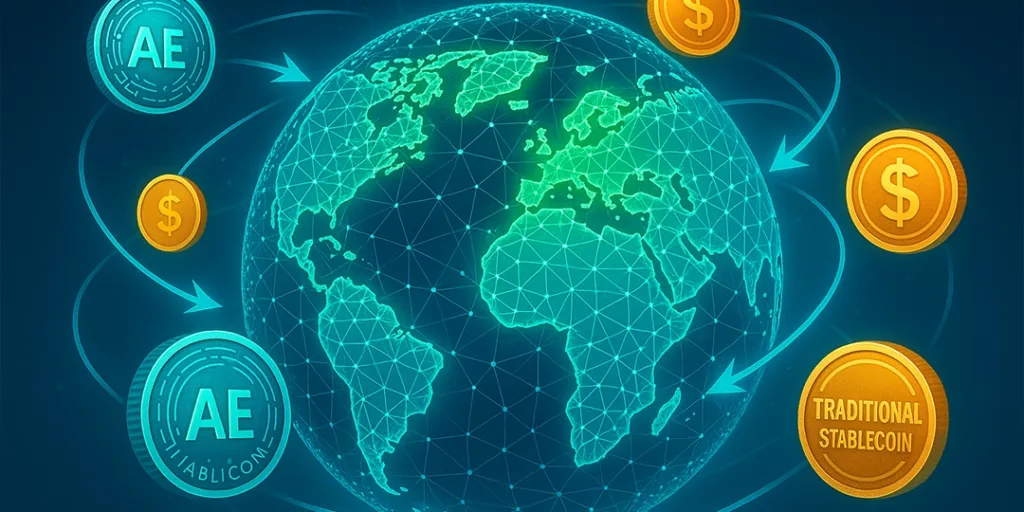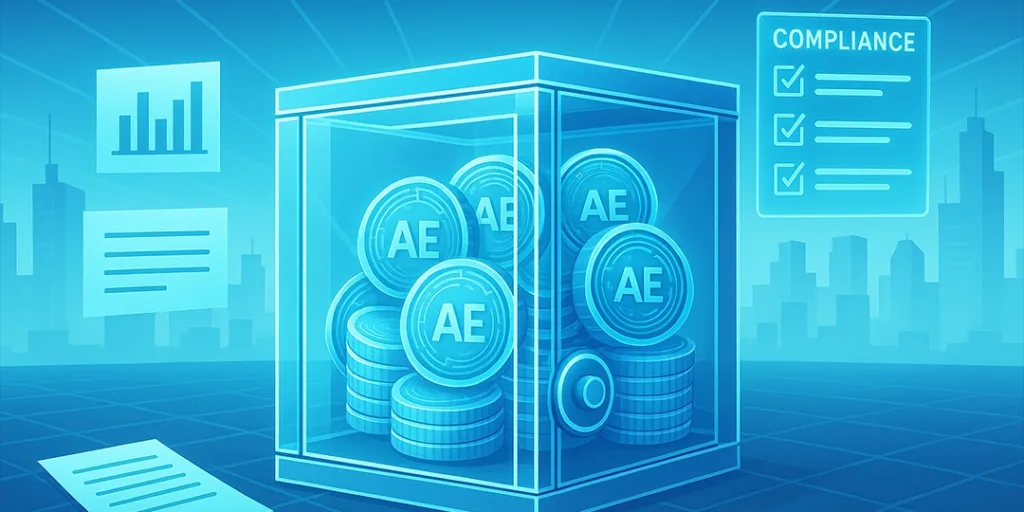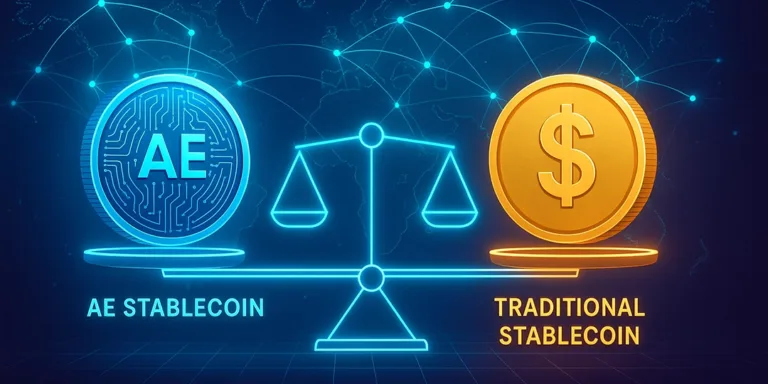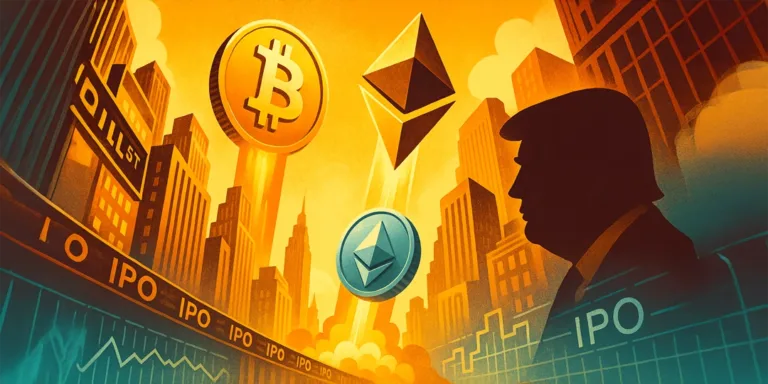Let’s be honest, stablecoins are the unsung heroes of crypto. They’re the glue holding trades together, the safe harbor when Bitcoin or Ethereum swings, and increasingly, they’re becoming the digital cash we use to pay for things. But here’s the catch: not all stablecoins are created equal.
On one hand, you’ve got the big players like Tether (USDT) and USD Coin (USDC). On the other hand, something new is stirring: AE stablecoins, the UAE’s first fully licensed, dirham-backed digital currency. And the difference between them? Ultimately, it comes down to a simple choice: speed versus true security, convenience versus trust.
Traditional stablecoins: Handy but haunted by questions
USDT and USDC exploded because they did one thing brilliantly: they acted like digital dollars. Each token aims for a 1:1 peg with the US dollar, supposedly backed by reserves. That simplicity made them indispensable. Traders cash out profits with them, DeFi platforms use them for loans, and they grease the wheels for trillions in trades every year.
But let’s not kid ourselves. The elephant in the room has always been trust. Tether has faced years of nagging doubts: “Is the money really there?” Even USDC, despite its more regulated vibe, has had its banking partners and redemption processes scrutinized. For regulators everywhere, the questions are relentless: What exactly is backing these things? What happens if things go south?

AE Stablecoins: The UAE’s regulated answer
This is where AE stablecoins (like AE Coin) take a completely different path. Issued by AED Stablecoin LLC and operating squarely under the Central Bank of the UAE’s (CBUAE) watchful eye, every single coin is backed 1:1 by actual UAE dirhams held securely in escrow. Translation: every token out there has a real dirham locked away for it, guaranteed by law.
Stability Starts Here
— AE Coin (@AECoin_UAE) August 14, 2025
As the first AED-backed stablecoin & regulated by the CBUAE, AE Coin delivers secure, instant and dependable transactions, without crypto volatility.
Peace of mind in every transaction.
Exclusively on the AEC Wallet app powered by Al Maryah Community Bank. pic.twitter.com/wtQA0C75r5
This setup is a world apart from the usual global suspects. It rests on three core pillars:
- Accountability: No guesswork. Independent auditors check the books, and reserves are reported daily to match what’s circulating.
- Transparency: You know exactly what’s backing your coin—pure dirhams, not a murky mix of assets.
- Security & Speed: Running on a permissioned blockchain (using Proof of Authority), transactions are fast, cheap, and settle in real-time—ditching the gas fee headaches of public chains.
That Central Bank stamp? It adds a layer of credibility most traditional stablecoins just can’t touch. For institutions and policymakers, this kind of regulatory clarity is exactly what they’ve been asking for.
Beyond just trading: Real-world use
While USDT and USDC rule the crypto trading roost, AE stablecoins are already stepping out into the real world. Need proof? You can now hail an Abu Dhabi taxi and pay your fare instantly with AE Coin using a simple QR code. Even more groundbreaking, Abu Dhabi courts accept AE stablecoins for settling fees, marking one of the first times a government has directly integrated a regulated stablecoin.
This jump from exchanges to everyday life is what makes them stand out. For businesses, they mean cheaper cross-border payments. For governments, they offer digital cash that’s traceable and compliant. And for regular folks? They deliver something most stablecoins miss: the rock-solid confidence of being backed by a central bank license.

The bottom line
Giants like USDT and USDC aren’t disappearing. Their massive liquidity and market penetration make them essential for trading crypto. But AE stablecoins are carving out a vital and distinct space. By blending blockchain speed with central bank-level security and oversight, they offer a glimpse of digital money’s next act: transparent, compliant, and useful far beyond just swapping tokens.
The future isn’t necessarily about one stablecoin replacing another. It’s about recognizing that AE stablecoins are built for powering actual economies and real transactions, and not just fueling speculative markets. That makes them a model worth serious attention as the whole world of digital finance grows.












